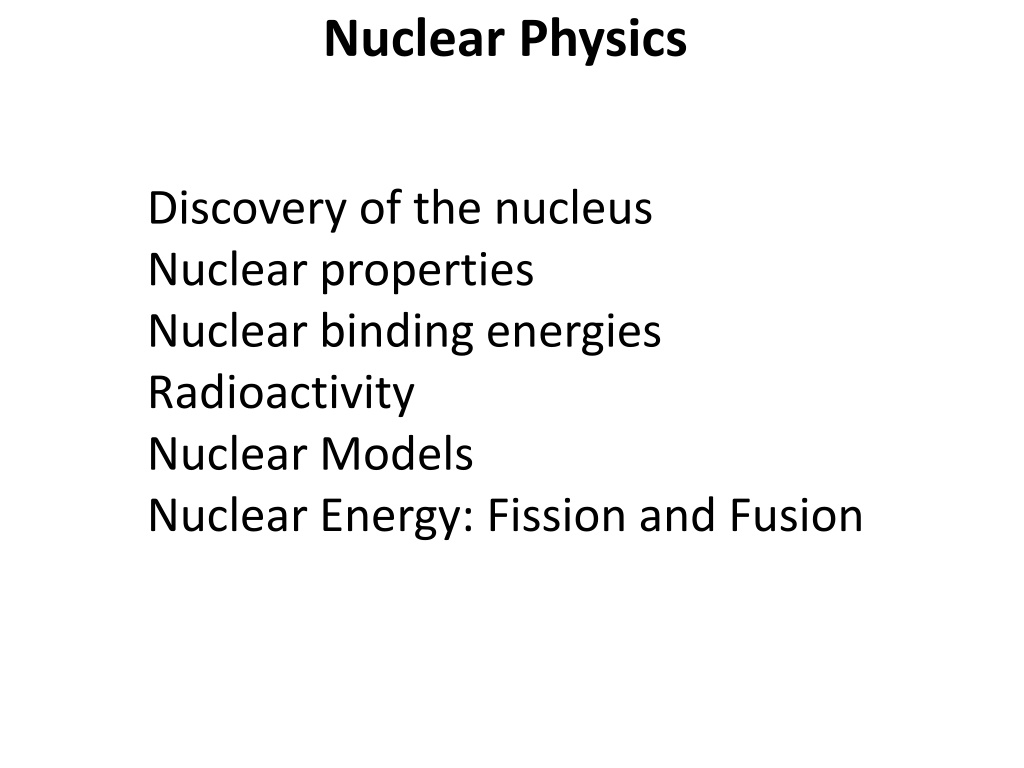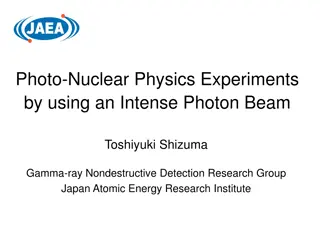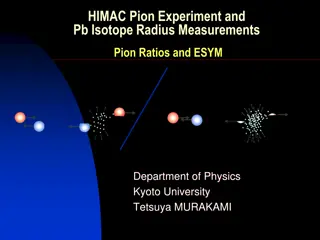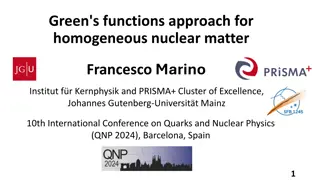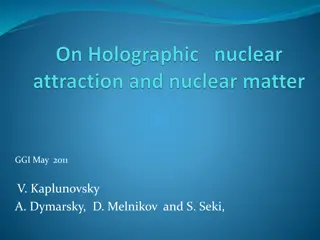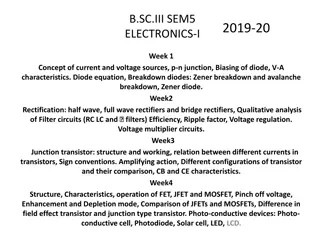Unveiling the Fascinating World of Nuclear Physics
Delve into the discovery of the nucleus, nuclear properties, binding energies, radioactivity, and nuclear models. Explore nuclear energy through fission and fusion, uncovering the intricate structure of the atom and Coulomb's law. Witness Rutherford's groundbreaking experiments that revolutionized our understanding of atomic particles, their masses, charges, and properties.
Download Presentation

Please find below an Image/Link to download the presentation.
The content on the website is provided AS IS for your information and personal use only. It may not be sold, licensed, or shared on other websites without obtaining consent from the author.If you encounter any issues during the download, it is possible that the publisher has removed the file from their server.
You are allowed to download the files provided on this website for personal or commercial use, subject to the condition that they are used lawfully. All files are the property of their respective owners.
The content on the website is provided AS IS for your information and personal use only. It may not be sold, licensed, or shared on other websites without obtaining consent from the author.
E N D
Presentation Transcript
Nuclear Physics Discovery of the nucleus Nuclear properties Nuclear binding energies Radioactivity Nuclear Models Nuclear Energy: Fission and Fusion
Discovery of the Nucleus An arrangement (top view) used in Rutherford's laboratory in 1911-1913 to study the scattering of a particles by thin metal foils. The detector can be rotated to various values of the scattering angle . The alpha source was radon gas, a decay product of radium. With this simple tabletop apparatus, the atomic nucleus was discovered.
Discovery of the Nucleus The dots are alpha-particle scattering data for a gold foil, obtained by Geiger and Marsden using the apparatus shown. The solid curve is the theoretical prediction, based on the assumption that the atom has a small, massive, positively charged nucleus. The data have been adjusted to fit the theoretical curve at the experimental point that is enclosed in a circle.
Structure of the atom Figure shows possible paths taken by typical alpha particles as they pass through the atoms of the target foil. As we see, most are either undeflected or only slightly deflected, but a few (those whose incoming paths pass, by chance, very close to a nucleus) are deflected through large angles. From an analysis of the data, Rutherford concluded that the radius of the nucleus must be smaller than the radius of an atom by a factor of about 104. In other words, the atom is mostly empty space.
Rutherford scattering An alpha particle with kinetic energy Ki = 5.30 MeV happens, by chance, to be headed directly toward the nucleus of a neutral gold atom (Fig. 42-4a). What is its distance of closest approach d (least center-to-center separation) to the nucleus? Assume that the atom remains stationary.
Properties of Atomic Particles Mass (MeV/c2) Particle Charge Mass (kg) Mass (u) -1.602 x 10-19C 9.109382 x 10-31 5.485 x 10-4 Electron 0.510999 1.602 x 10-19C 1.672622 x 10-27 Proton 1.007276 938.27 1.674927 x 10-27 Neutron 0 1.008665 939.57 1.673534 x 10-27 H-atom 0 1.007825 938.783 1.66053886 x 10-27 u 0 1 931.494 The nucleus of an atom consists of neutrons and protons, collectively referred to as nucleons.
Atomic Mass Unit = u Express the atomic mass unit, u in its rest energy equivalent.
Some Properties of Selected Nuclides Binding Energy (Me V/nucleon) Stabilitya Massb (u) Spinc Nuclide Z N A 1/2 1H 1 0 1 99.985% 1.007 825 3/2 7Li 3 4 7 92.5% 7.016 004 5.60 1/2 31P 15 16 31 100% 30.973 762 8.48 84Kr 36 48 84 57.0% 83.911 507 0 8.72 120Sn 50 70 120 32.4% 119.902 197 0 8.51 3/2 157Gd 64 93 157 15.7% 156.923 957 8.21 3/2 197Au 79 118 197 100% 196.966 552 7.91 3/2 227Ac 89 138 227 21.8 y 227.027 747 7.65 1/2 239Pu 94 145 239 24 100 y 239.052 157 7.56
Known Nuclides The green shading identifies the band of stable nuclides, the beige shading the radionuclides. Low-mass, stable nuclides have essentially equal numbers of neutrons and protons, but more massive nuclides have an increasing excess of neutrons. The figure shows that there are no stable nuclides with Z > 83 (bismuth).
Organizing the Nuclides The neutral atoms of all isotopes of an element (all with the same Z) have the same number of electrons and the same chemical properties, and they fit into the same box in the periodic table of the elements. The nuclear properties of the isotopes of a given element, however, are very different from one isotope to another. Thus, the periodic table is of limited use to the nuclear physicist, the nuclear chemist, or the nuclear engineer. An enlarged and detailed section of the nuclidic chart, centered on 197Au. Green squares represent stable nuclides, for which relative isotopic abundances are given. Beige squares represent radionuclides, for which half-lives are given. Isobaric lines of constant mass number A slope as shown by the example line for A = 198.
Nuclear Radii and Density r0 1.2 fm Density of nuclear matter:
Nuclear Binding Energies The mass M of a nucleus is less than the total mass m of its individual protons and neutrons. That means that the mass energy Mc2 of a nucleus is less than the total mass energy (mc2) of its individual protons and neutrons. The difference between these two energies is called the binding energy of the nucleus: Binding energy is not an energy that resides in the nucleus. Rather, it is a difference in mass energy between a nucleus and its individual nucleons: If we were able to separate a nucleus into its nucleons, we would have to transfer a total energy equal to Ebe to those particles during the separating process. Although we cannot actually tear apart a nucleus in this way, the nuclear binding energy is still a convenient measure of how well a nucleus is held together, in the sense that it measures how difficult the nucleus would be to take apart. A better measure is the binding energy per nucleon Eben, which is the ratio of the binding energy Ebe of a nucleus to the number A of nucleons in that nucleus: We can think of the binding energy per nucleon as the average energy needed to separate a nucleus into its individual nucleons. A greater binding energy per nucleon means a more tightly bound nucleus.
Plot of the binding energy per nucleon Eben versus mass number A The binding energy per nu-cleon for some representative nuclides. The nickel nuclide 62Ni has the highest binding energy per nucleon (about 8.794 60 MeV/nucleon) of any known stable nuclide. Note that the alpha particle (4He) has a higher binding energy per nucleon than its neighbors in the periodic table and thus is also particularly stable. What is the binding energy per nucleon for 120Sn?
